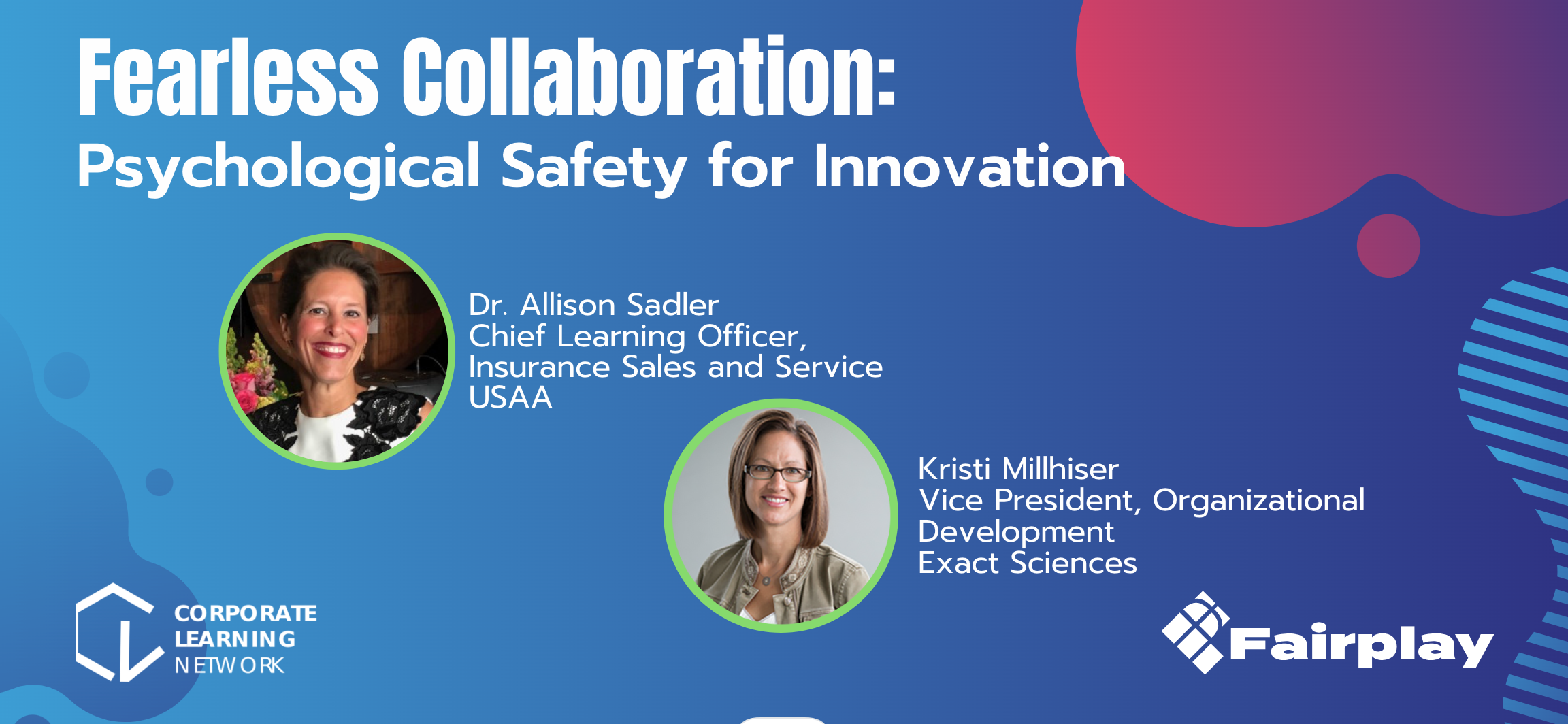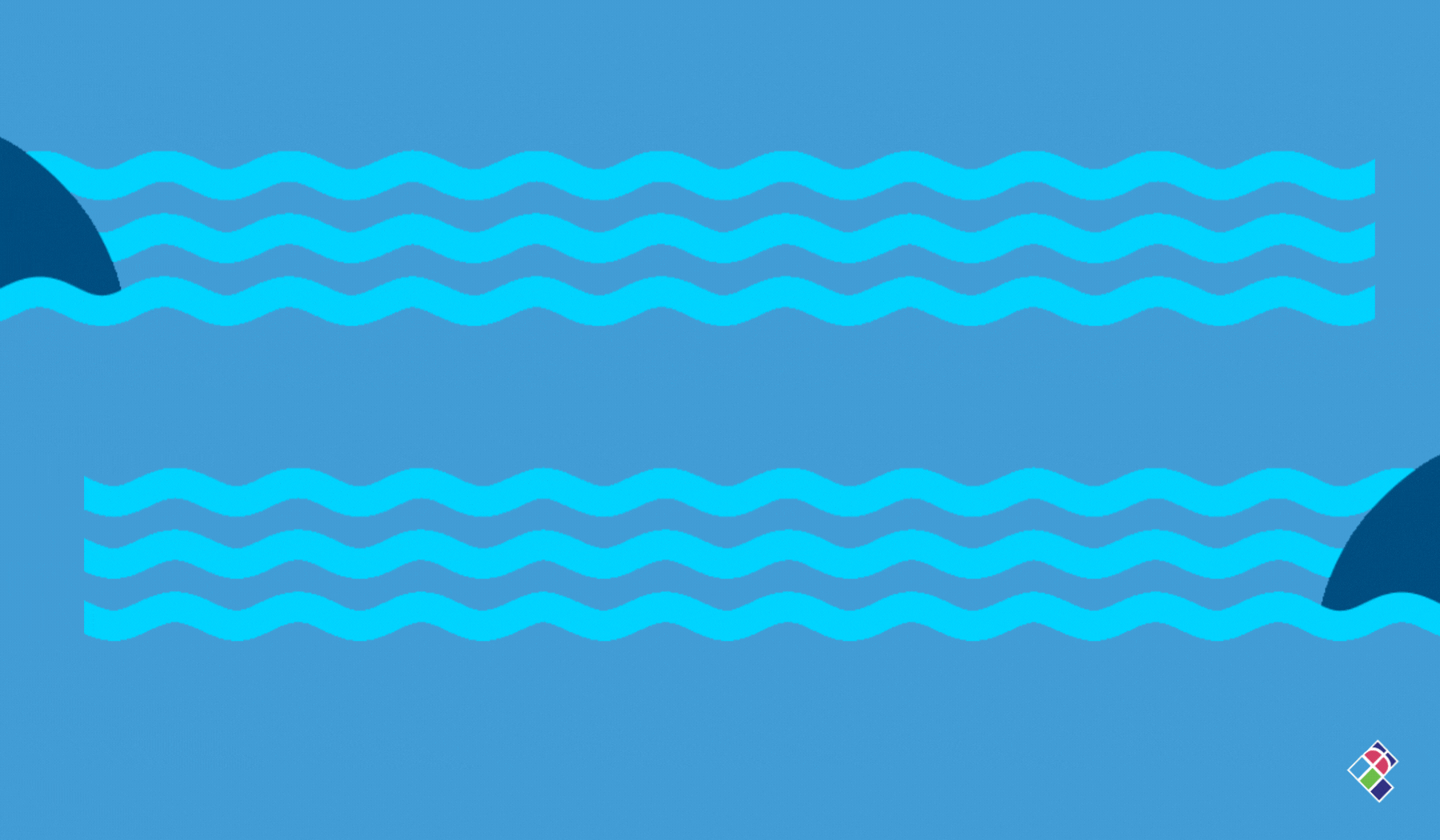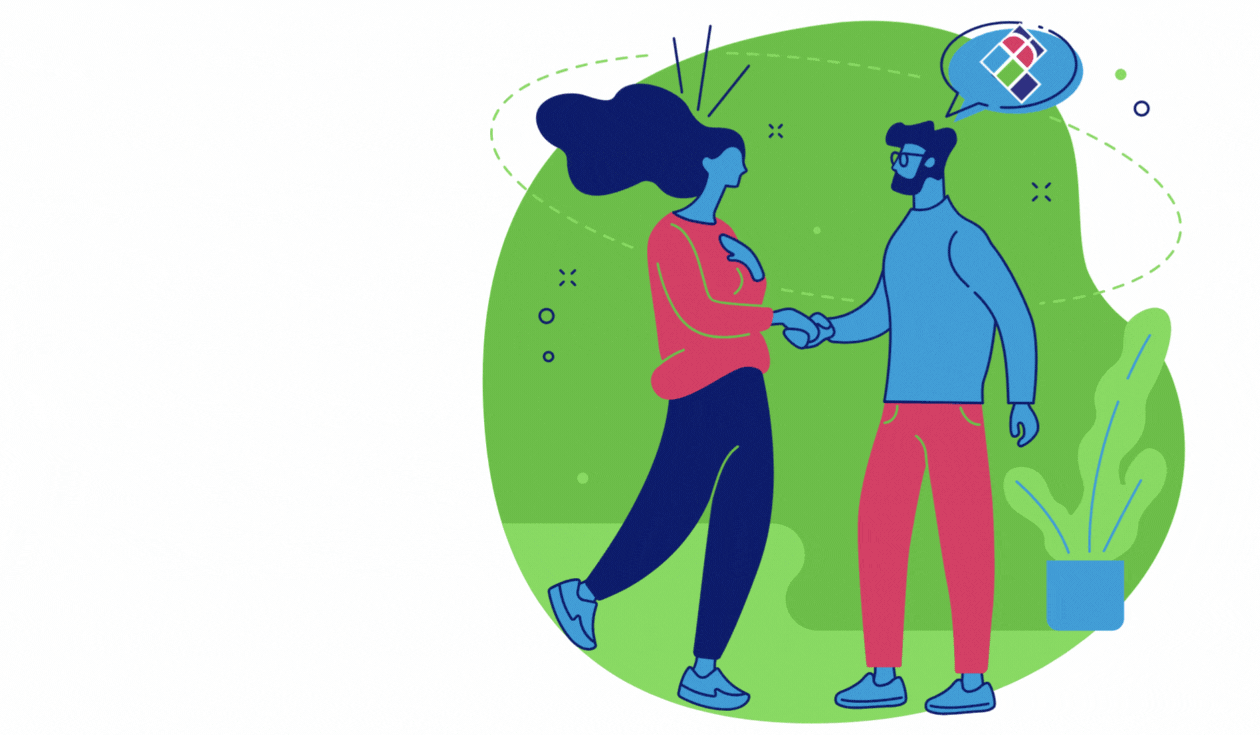Webinar Fearless Collaboration: Psychological Safety for Innovation
The webinar replay for 'Fearless Collaboration: Psychological Safety for Innovation' is ready for viewing. Whether you missed the live event or want...
4 min read
![]() Andrew Eninger
:
Jan 9, 2024 11:44:19 AM
Andrew Eninger
:
Jan 9, 2024 11:44:19 AM
 Not every task requires collaboration, but every *company* does. Unfortunately, over time, some of our organizational behaviors get in the way. Territorial managers, a culture of aggressive (non)communication, or even competing messaging platforms might stifle our ability to work together at our best.
Not every task requires collaboration, but every *company* does. Unfortunately, over time, some of our organizational behaviors get in the way. Territorial managers, a culture of aggressive (non)communication, or even competing messaging platforms might stifle our ability to work together at our best.
If you want to create a more collaborative culture, the best way to start is at the very beginning: Onboarding. If you bake great collaboration into your recipe for bringing new hires into the company, each new generation will value working together more than the last.
What is collaboration?
When we talk about collaborating, we are usually getting at three things:
If you aren't building great collaboration skills into your onboarding, you might be missing a great opportunity to help new employees thrive and work together no matter what.
We believe a few simple practices during onboarding can lay the groundwork for great collaboration for years to come.
Name the Norms
Most onboarding programs will cover big picture items like company purpose and values. In the rush of new information for first-day employees, that may be a lot to digest. Are you taking the time to break your values down into the day-to-day collaborative behaviors that define your workplace? This is the time to name what 'great' looks like. You might also need to name what bad looks like, in case people are bringing some baggage from their previous companies. (Don't we all?) By naming the norms, you give everyone a chance to hit the reset button and create a new normal where working together works because people know it's valuable. Some of our favorite norms -
Tell Positive Collaboration Stories
The culture lives in the stories we tell each other. Set the tone for great collaboration by illustrating the practices you want to see through a simple and memorable who, what, where. For example, if you are onboarding a group about the specifics of a project process, go beyond the bullet point list of the tactical steps to include an example of how a team followed the process in the face of an unexpected disruption, and how people were able to support each other through ambiguity. One of our favorite tactics is to cast the people in the onboarding session in your description. For instance, "Let's say Candace is initiating the process. She pings Rodney to get the project number. But Rodney is at a conference and didn't put his out of office on. Candace finally picks up the phone and calls, because we tend to do that here if it's more than two e-mails. Fortunately, his messages are routed to Shayna, who is covering for Rodney." Describing a collaborative process this way makes it more memorable, illustrates the culture you want to create, and is more likely to be recalled in those make-or-break moments this group will face in their first ninety days.
Use a 'yes, and' approach to work style
Hopefully, your company isn't 'one-size-fits all' in the way you approach work. Collaborative teams are able to shift the way they work when needed, both individually and as a group. In your onboarding process, you will get to know individual work styles and preferences. Use a yes, and approach to welcome differences while also encouraging openness.
"YES, it's wonderful that you are great at wrapping up details! AND, you'll be working with people whose function demands that they look at the big picture, so you'll both learn something from each other."
Acknowledge and welcome each person's preferred style and approach - AND connect it to the value of flexing one's style when required. Think of it like traveling abroad: you don't leave your food preferences behind when you travel, but you do need to flex out of your comfort zone and try a different dish if you want the full experience. Build in onboarding activities that allow people to share their approach to collaboration, and use this as an opportunity to showcase the diversity of work styles and ways to flex. This is a great moment to use a pre-existing assessment like DiSC, ClitfonStrengths or FourSight Preferences to provide structure to the conversation and self-awareness.
Build Systems Thinking
You are about to drop this onboarding group into the deep end where they will be swimming for their lives (so to speak). They're going to have a lot to learn on the job about their role and they'll need to hyper-focus on the priorities day by day. Before they move into that necessary mode of tunnel-focus, take them for a tour of the big picture. Onboarding is a chance to link their role to the business and to other parts of the business - even the areas they may never touch in the course of their weekly work. When people become a student of the business, they are able to be more innovative and expansive in how they collaborate. *"I remember during onboarding when we met people from the product side. I wonder if some of them already have a parallel process that we could copy-paste for this challenge we're facing - why reinvent the wheel if they're already solving these kinds of problems?"*
_
At the end of the day, great collaboration results in real 'cha-ching' moments where people working together in smart ways saves time, achieves goals and busts through barriers. Set the foundation for those moments from day one by making collaboration an integral theme in your onboarding process, and watch how your culture soars.
If you are looking for collaboration-building programs that plug into your onboarding journey, Fairplay believes there's a way to build better ways of working. Our short, adaptable live and live online workshops can help you build collaborative practices for your next generation of employees.

The webinar replay for 'Fearless Collaboration: Psychological Safety for Innovation' is ready for viewing. Whether you missed the live event or want...

Everyone’s talking about psychological safety. Sure, psychologically safe organizations are proving to be more resilient, more innovative and more...

Not every task requires collaboration, but every *company* does. Unfortunately, over time, some of our organizational behaviors get in the way....